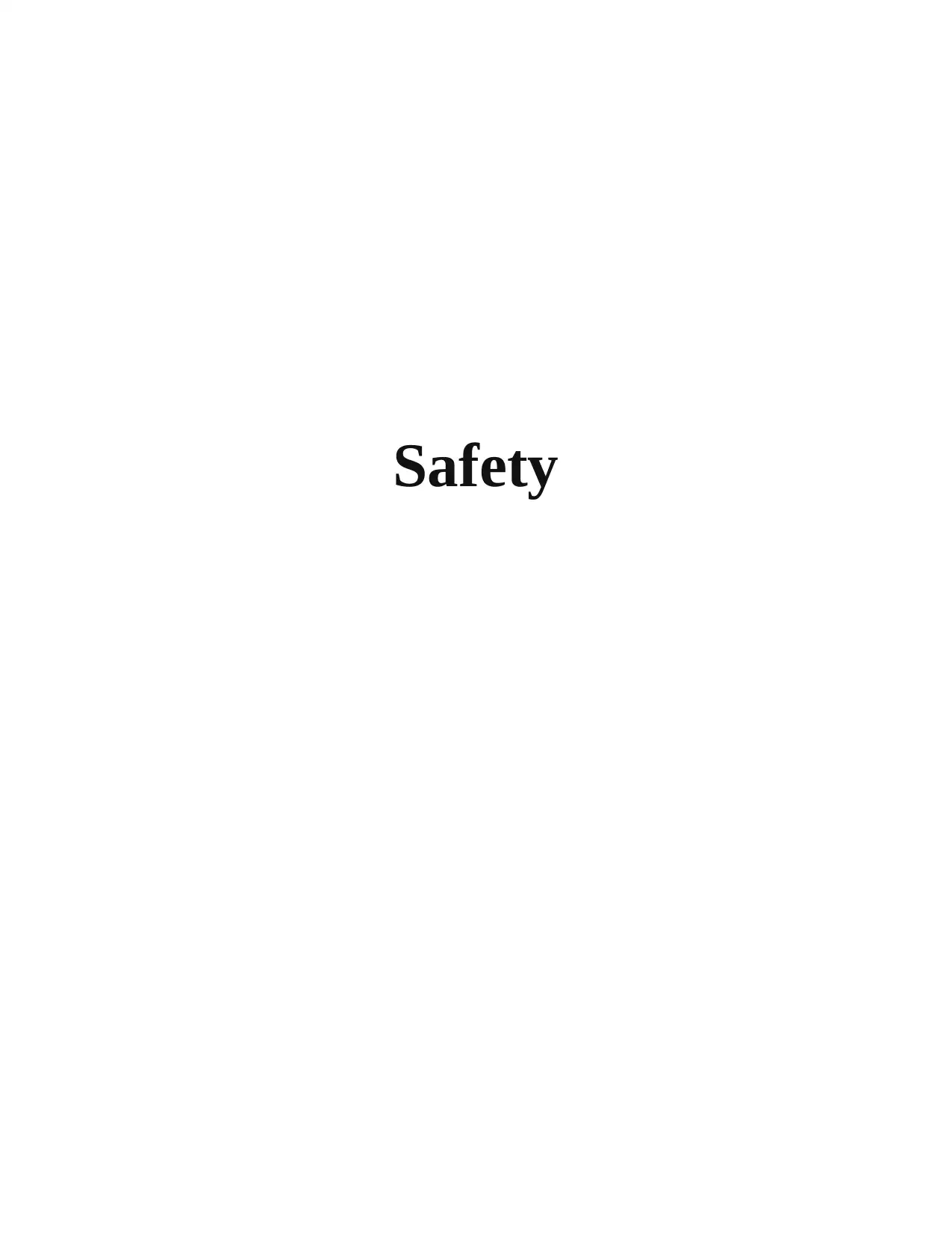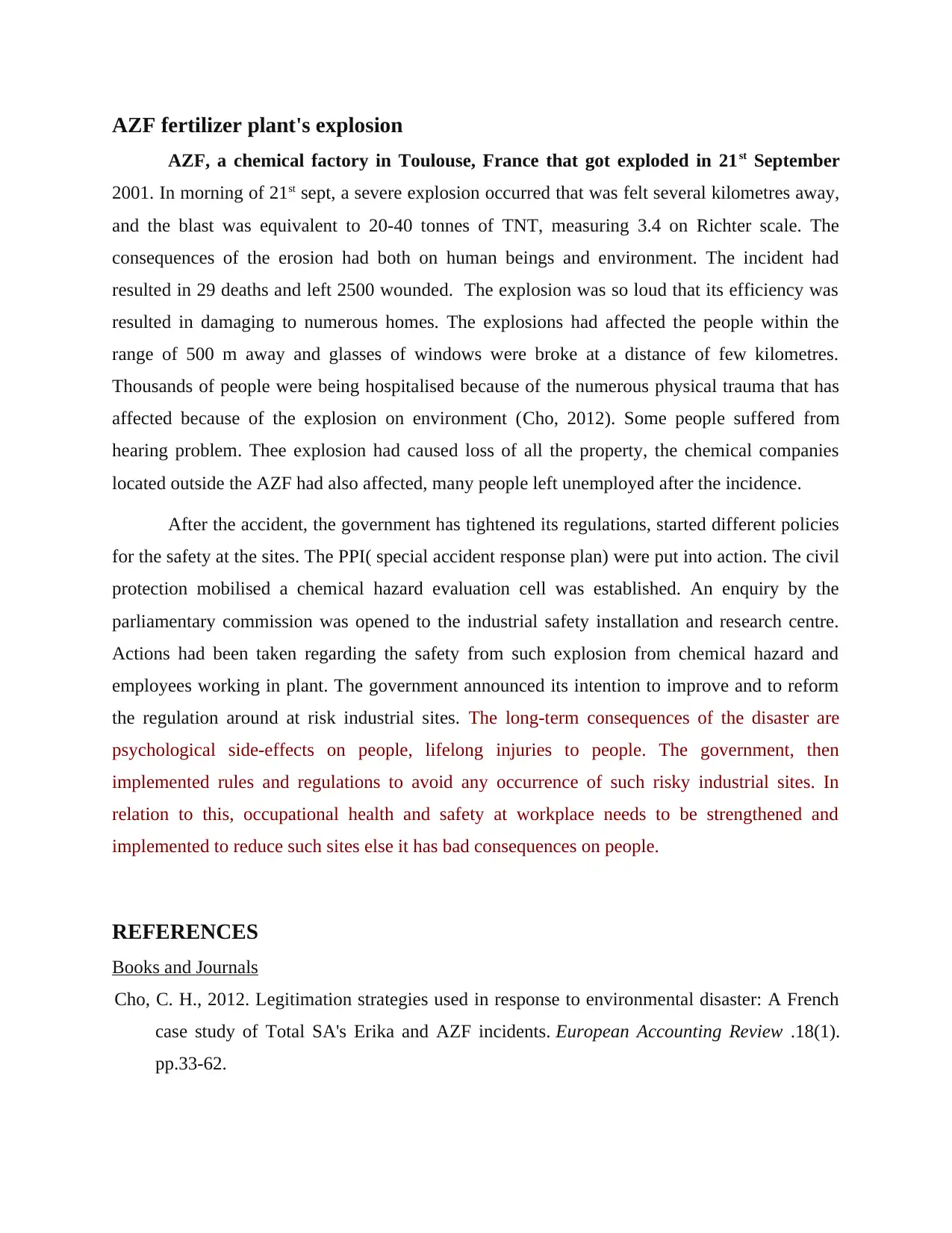Environmental Impact of AZF Fertilizer Plant Explosion Report
VerifiedAdded on 2020/11/23
|3
|404
|64
Report
AI Summary
The report examines the AZF fertilizer plant explosion in Toulouse, France, which occurred on September 21, 2001. The explosion, equivalent to 20-40 tonnes of TNT, resulted in 29 deaths, 2500 injuries, and extensive property damage. The blast's impact extended several kilometers, causing physical trauma, hearing problems, and widespread economic consequences. The government responded by implementing stricter regulations, establishing the PPI, and mobilizing a chemical hazard evaluation cell. The report highlights the long-term psychological and physical effects on those affected, emphasizing the importance of strengthened occupational health and safety measures to prevent similar disasters. The reference provided is a journal article by Cho (2012) discussing legitimation strategies used in response to the disaster.
1 out of 3










![[object Object]](/_next/static/media/star-bottom.7253800d.svg)